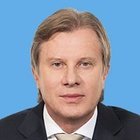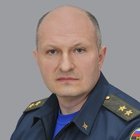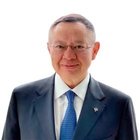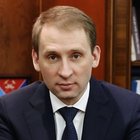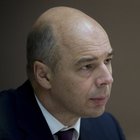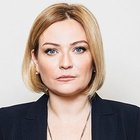State border checkpoints are the focus of the meeting. Deputy Prime Minister Vitaly Savelyev and Head of the Federal Customs Service Valery Pikalyov delivered reports. A number of pressing issues were discussed at the beginning of the meeting.
* * *
President of Russia Vladimir Putin: Good afternoon, colleagues.
As earlier agreed, we will discuss state border checkpoints today. Before that, we will address a number of current issues. Without a doubt, we should start with the wildfire and spring flood recovery efforts.
Mr Kurenkov, please update us on the wildfire situation. Let us begin with that.
Minister for Civil Defence, Emergencies and Natural Disaster Relief Alexander Kurenkov: Mr President,
Almost 6,000 wildfires have broken out in the Russian Federation since the beginning of the year covering an area of over 3.5 million hectares. Even though the number of fires is down by 30 percent compared to last year, the area under the fire has increased by 50 percent.
According to the Aerial Forest Protection Service, there are over 500 active wildfires covering an area of over 1 million hectares. Only 62 of them, i.e. only 12 percent, have been contained with 15 wildfires raging near populated centres.
(The Minister went on to say that the situation in the forests in the Republic of Sakha (Yakutia) and Transbaikal Territory had been classified as a federal emergency, and updated the participants about the Emergencies Ministry using its forces and means to protect communities from the spreading fire).
With regard to the spring flood recovery efforts, over 29,000 detached houses and 16,000 summer houses (dachas), as well as over 300 low-water bridges and 140 social facilities, have been flooded in 64 constituent entities of the Russian Federation since the beginning of the year. The situation resulting from spring floods in the Orenburg and Omsk regions and the Republic of Sakha (Yakutia) was recognised as a federal emergency. The Tyumen and Kurgan regions have been significantly affected as well.
Importantly, flood water levels in these constituent entities remained high for over a month before receding and exceeded critical marks by several metres in some areas.
(Alexander Kurenkov reported about the financial aid provided to the affected households. Over 350,000 people received lump-sum financial aid; over 70,000 people impacted by the flood received financial aid to cover for the loss of essential property. Nearly 11 billion rubles have been paid to offset losses. In pursuance of the President’s instruction, the Emergencies Ministry and the Finance Ministry have submitted to the Government a draft resolution which provides for a 50- percent increase in the amount of payments to the people affected by the floods.)
The flood recovery efforts continue. The bulk of the housing construction must be completed by October 31, 2024.
That concludes my report. Thank you.
(Answering the President’s question about whether housing will be restored in time before the cold season sets in, Minister of Construction, Housing and Utilities Irek Faizullin briefly reported about the progress of work in the Orenburg, Kurgan, Tyumen and Omsk regions, and the Republic of Sakha (Yakutia). He also mentioned the challenging situation on the Tyumen-Omsk Motorway. Proper measures were swiftly taken in conjunction with the regional authorities, Rosavtodor and the Ministry of Transport to keep the motorway drivable. He noted, however, that steps should be taken to preclude such incidents in the future and to raise the level of this road by two metres. Also, in some cases new areas for housing construction should be designated, because current locations will go underwater again if the area gets flooded.
According to the Minister, all plans and schedules have been drafted in conjunction with the regional authorities and remain under special control. He also said blocks of flats and detached houses will be built before the onset of winter in Orsk which was hit hardest by the floods, and the construction work concerning the houses that people have undertaken to build themselves will be supervised as well. The regional authorities will refund their rental expenses.
The President instructed the Minister to keep a close eye on the developments, and to provide administrative support and help to the local people).
Vladimir Putin: Mr Kozlov, how is the Aerial Forest Protection Service coping with its work? Do you have any questions, perhaps, additional requests?
Minister of Natural Resources and Environment Alexander Kozlov: Mr President, Mr Prime Minister, colleagues.
Our forecast for the first half of the summer came true. The forces and means have been deployed, as Mr Kurenkov said. Wildfires were contained before they could reach populated centres. From May to July, the bulk of wildfires – about 85 percent – broke out in the Khabarovsk Territory, Yakutia, the Transbaikal Territory, and the Amur Region. Most of them, two thirds of massive wildfires, occurred in hard-to-access and remote areas, including the Arctic regions. For example, wildfires in Yakutia broke out in places that are thousands of kilometres away from populated areas, in the Transbaikal Territory up to 500 kilometres, and the Amur Region 300–500 kilometres.
I would also like to say the following. I believe this is important. According to the statistics of the past years, wildfires in the northern territories used to begin in July but this year they started a month earlier due to abnormal hot weather and thunderstorms.
(Next, the Minister noted three Far Eastern regions where the wildfire situation was developing negatively: the Trans-Baikal Territory, Yakutia, and the Amur Region. The entire Aerial Forest Protection Service and interregional maneuvering units were sent there to support the regional units, in particular, groups for counter-blasts to fight off the fire with an oncoming explosion, and cloud seeding. Mr Kozlov added that, according to Rosgidromet’s forecasts, fire danger levels will not go down. The peak of summer fires is expected within two to three weeks. Experts believe that this year may be among the ten warmest of the last 30 years. In addition to the Far East, fires are predicted to intensify in a number of Siberian regions.)
What have we done? We have put our forces on high alert. We are increasing the frequency of forest monitoring and moving groups within regions.
Mr President, as for the assistance you have mentioned, you instructed us to work with the regions and increase financing allocated to those that have begun to extinguish larger areas than before. There are 23 such regions. We have increased the firefighting area by 211 million hectares.
[Minister of Finance Anton] Siluanov and I have agreed that all the 23 regions will cost an additional 10 billion. This sum includes 1,600 employees, 20 new aviation departments and 24,000 helicopter firefighting flight hours.
Starting from January 1, 2025, we will budget half of this to cover the regions with most fires. We forecast that these are Yakutia, the Krasnoyarsk Territory, and the Trans-Baikal Territory. Starting from 2026 and having counted everything, we must cover the following territories.
Thank you for your attention. The report is finished.
Vladimir Putin: Have all the financial issues been agreed? Do you have any problems with funding now?
Alexander Kozlov: Everything has been discussed with Mr Siluanov. Next week everything will be prepared for the Prime Minister to sign and approve.
Vladimir Putin: Yes, good. Thank you.
Ms Lyubimova, it is summer, and quite a lot of theatre groups are coming to us from abroad. Our artists are touring the country as part of the National Tour project, and doing foreign tours as well. How do you assess the current state of affairs and what needs to be done in the near future?
Minister of Culture Olga Lyubimova: Mr President, colleagues.
We keep expanding the number of performance groups coming to Russia and improving the availability of cultural benefits for our public.
Based on the past four years of work, I can safely say that the single touring system is, indeed, popular with the performers and spectators from all regions. This year, 268 theatres, almost half of all country’s theatres, are participating in the Grand Tour programme, and another 61 national companies are participating in the We are Russia programme. The programme spans the territory from Kaliningrad to Yuzhno-Sakhalinsk and includes over 260 cities and towns in all 89 constituent entities of the Russian Federation.
The number of performance groups from the Lugansk and Donetsk people’s republics in the New Regions programme is growing. In 2022, we started out with 12 troupes on tour, and in 2024 we already have 17 acting companies. They will tour 106 cities this year from the North Caucasus to the Far East. The Donbass Song and Dance Company will have the largest tour of the year travelling over 25,500 kilometres.
The theatre part of the Single Touring Plan features numerous outstanding performing companies, such as the Maly Theatre and Nikita Mikhalkov’s Workshop 12. Their tours were timed to coincide with the anniversary of the Crimean Spring. They graced the peninsula with their stagecraft, including The Big Three (Yalta-45) and “12” theatrical plays. The Chekhov Moscow Art Theatre will go on a tour to the Baikonur Cosmodrome in September in time for the launch of a crew of cosmonauts to the ISS.
The children’s touring programme deserves special mention. It enjoys unfading demand among young theatre-goers. For example, in March, our colleagues from the Ryazan Theatre for Young Audiences visited the city of Anadyr which is one of the most remote locations in the Russian Far East. The Kstovo Puppet Theatre from the Nizhny Novgorod Region will be performing in Lugansk ahead of the New Year holidays in December. Thanks to our touring plan, the public from small villages and towns now have the chance to enjoy concert programmes by outstanding national performers. A song and dance company from the Republic of Tatarstan, which performed in the town of Maly Truyov with a population of 1,300 and in the town of Issa (Penza Region) with 4,900 residents, is a case in point.
Our international programme of large tours offers unique opportunities to maintain creative and professional ties with Russia in modern-day circumstances. This year, our colleagues from Abkhazia, South Ossetia, Kazakhstan, Kyrgyzstan, Azerbaijan, Belarus, Tajikistan, Uzbekistan, and Armenia will come to Russia. In all, 24 theatres will bring about 100 theatre shows.
Eifman Ballet opened this year’s international tour season in Minsk, and the Moscow Gubernsky Theatre led by Sergei Bezrukov gave its first international performance on the stage of the Russian Drama Theatre in Baku. The Mari Opera and Ballet Theatre plans to perform in Minsk, and Moscow’s Et Cetera Theatre will go on a tour to Alma-Ata.
The comprehensive support provided by the Ministry of Culture to the theatres that perform in languages spoken by the peoples of Russia is another strategic area designed to advance and promote the theatrical art. There are over 100 such theatres in our country, and their tours feature prominently in our plans. Simultaneous translation is provided for these theatrical plays.
We constantly work to provide more opportunities to performers to act at diverse venues and to help the most talented and vibrant performing companies share their art with the public.
Thank you.
Vladimir Putin: Good, thank you.
Summer is a vacation season, but we continue working. Last year, we had 73.4 million workers; the figure this year is 74.1 million, and the unemployment rate is record low at 2.6 percent.
Mr Kotyakov, what can you say on this?
Minister of Labour and Social Protection Anton Kotyakov: Mr President,
Indeed, we can see that our workforce is growing. As of late May, it has increased by 100,000 to 74.1 million.
But we also see that the demand by profession is growing unevenly, the demand being the highest for skilled workers, industrial engineers, and the staff for the mining industry and construction. As per your instructions, we are formulating a five-year forecast for workforce demand. Taking part in this job are representatives of various agencies, including the Federal State Statistics Service (Rosstat), the Economic Development Ministry, the key agencies, all regions of Russia, expert organisations and, of course, employers.
The forecast we are making takes into account macroeconomic parameters, territorial specifics, demographic changes and, of course, strategic development plans for various economic sectors.
We are currently working with employers to evaluate workforce demand by profession and skills. Over 140,000 companies are taking part in this work, which should produce a detailed picture of how many personnel of the required professions and skills we will need in a given region in one, three or five years. This forecast will connect the enrolment number of students, economic requirements and long-term plans. Ultimately, it will help us smooth out structural disproportions on the labour market.
(The Minister reported on measures aimed at smoothing out current personnel imbalances, such as the resumption of the pension indexation for working pensioners, which can help convince skilled and experienced personnel to continue working; the co-financing of personnel relocation from other regions for companies in priority sectors; free retraining under 175 programmes not only for the unemployed but also for working people, which helps over 80 percent of those who attended such courses to find employment. Defence sector companies can request financial assistance for retraining and training personnel at the facilities where they will work or are currently working.)
Although the average unemployment level is low across the country – as you pointed out, Mr President, it is record low at 2.6 percent, the situation on the labour market differs from region to region. The unemployment level is above 26 percent in Ingushetia, 11.5 percent in Dagestan, and about 10 percent in three other constituent entities of the Russian Federation.
Therefore, another aspect of our current measures concerns impacting the structural unemployment on the labour market and balancing out the disproportions between the regions on the market.
We are specifically working with ten regions where the largest reserves of unengaged labour potential are concentrated. We are helping, together with our colleagues from other agencies, to create additional jobs. The outcome is, compared to last year’s employment rate, that we have engaged 57,000 more people across these regions.
Certainly, we are paying special attention to young people. It is important to note that the employment rate in this group is now significantly below the indicators in older age categories.
(Anton Kotyakov continued to talk about services focused on career opportunities for young people, such as recruitment services, internships, work placements, monitoring of alumni employment and personal support during studies. The ultimate goal is to provide seamless transition from studies to employment after graduation. The minister also talked about competition for employer-sponsored education. On the Work in Russia portal, companies have created more than 163,000 employer-sponsored study offers. Another initiative to promote highly sought-after professions is the annual National Employment Fair that showcases the opportunities of the modern labour market. Universities, colleges as well as parks, stadiums and city spaces provide venues for these fairs in the regions. The fair took place at 2,392 sites across all 89 regions of Russia. Following last year’s fairs, more than 120,000 people were hired. This year, the first, regional stage took place on April 12, when employers presented more than 540,000 jobs, hiring more than 53,000 people to date. The federal stage of the employment fair took place on June 28. Companies presented more than 590,000 open jobs.)
Vladimir Putin: I believe in the past years, the unemployment rate was higher among youth in the unemployment structure by age, is that correct? As I understand, the situation has changed.
Anton Kotyakov: The share is still higher than the average rate among the employable population, but the overall unemployment rate has significantly dropped in recent years, thanks to the cooperation between agencies under the youth unemployment relief programme.
Vladimir Putin: However, is the youth unemployment rate still higher?
Anton Kotyakov: Yes, it is higher, especially among the young people aged 20–24. This is mainly due to the fact that they are studying. But we are working with our colleagues to make it possible for young people to start working in their senior university years.
Vladimir Putin: Good, thank you.
We have been talking about cultural events this summer. Now, Mr Degtyarev, how have the BRICS Games ended? What are the results? How would you describe the situation?
Minister of Sport Mikhail Degtyarev: Mr President,
We continue working on the interstate sports agenda within the CIS, BRICS, the SCO, the Caspian Economic Cooperation Organisation and other organisations.
As per your instructions, all competitions, including the BRICS Games, are held in an open format. This year, over 5,500 athletes from 82 countries took part in them. The games held in Kazan were a success. All participants noted their good organisation, visual appeal and large audiences. Over 25 million people watched them on television, and hundreds of millions did so on social media. Such competitions are entertaining and topical, especially now when our athletes are denied access to international tournaments.
The Games of the Future, which were held this year thanks to your assistance, were a high-point event that brought 116 countries together. The phygital games have reaffirmed that we are an open country, and that we can hold major tournaments and create innovative formats.
In addition, the Government is considering a draft resolution on monetary awards to the winners and medallists of the BRICS Games and their coaches that will correspond to the traditional payment awards granted at world championships.
During a meeting of SCO ministers in Almaty, we proposed holding SCO Games in an open format as well. The SCO Secretary General attended our meetings. Overall, our idea was supported, and we are currently working on the legal framework of the games for approval by all the member states.
The 8th Children of Asia International Sports Games have recently ended. They brought together over 2,000 young athletes from 24 states who vied for 237 sets of medals in 22 sports. The Silk Way Rally, which is underway, began in Tomsk on July 5 and will end in Ulaanbaatar. As many as 106 crews from 13 countries are taking part in the rally.
In the first six months of the year, we held 26 major international sport competitions, and we will hold over 20 other events before the year is out.
I can also note the year 2025 when we will hold the 4th Russian-Chinese Winter Youth Games in Yuzhno-Sakhalinsk. We also agreed with Belarus to hold the Russia-Belarus Union State Spartakiad, and the Open Union State Biathlon Championships will also take place. All this strengthens international cooperation.
I would also like to remind everyone that, as per your instruction, Ufa will host the Russia – a Sports Power International Forum. This event will also mark the 450th anniversary of the city of Ufa. We will bring together over 3,000 participants, including those from other countries. We are expecting ministers of sport, international sports organisations, representatives of the BRICS, SCO and CIS associations. The focus will be on the implementation of national development goals, as stipulated by your May executive order.
Today, we can see that it is important and necessary to consolidate the sport agenda within the framework of interstate associations. This remains unaffected by sanctions and restrictions.
In conclusion, I can say that Russia has proved that the open format of competitions is an effective method for the development of sport. Mr President, on behalf of all athletes, I would like to thank you for this. The Ministry of Sport will organise all interstate competitions, due to take place in Russia.
That concludes my report.
Vladimir Putin: Mr Degtyarev, you and I have discussed this issue. It is necessary to plan future competitions at this level and on this scale, so that they do not coincide with international calendars, so that we have enough high-level and top-level athletes, and so that they do not have problems with this calendar. You know what I am talking about and take this into account in the future.
On the whole, I believe this experience is quite positive, and quite a few people are willing to come. Please do not delay the payment of the relevant bonuses to our winners, medallists and coaches.
Thank you very much.
Today, Mr Degtyarev is celebrating his birthday. Mr Degtyarev, all of us would like to congratulate you, and we wish you all the best. We wish you every success.
Mikhail Degtyarev: Thank you, Mr President.
Vladimir Putin: Let us move on to the main issue.
Please, Mr Savelyev, about the crossing points. Go ahead.
Deputy Prime Minister Vitaly Savelyev: Mr President, colleagues.
State border crossing points are one of the key elements in foreign trade logistics and international transport corridors.
As of today, Russia has 317 checkpoints, of which 87 have been designated as priority ones because they handle more than half of the country’s total freight traffic.
In 2021, we launched a far-reaching project to modernise border checkpoints in order to improve international transport corridors and promote foreign trade.
Between 2021 and 2023, the Ministry of Transport implemented over 160 policies to develop Russia’s cross-border infrastructure.
(Vitaly Savelyev went on to report on the comprehensive modernisation of 14 priority checkpoints. He mentioned the road checkpoints that have been overhauled: Kyakhta on the border with Mongolia, Verkhny Lars on the border with Georgia, and Yarag-Kazmalyar and Tagirkent-Kazmalyar on the border with Azerbaijan. A new railway checkpoint, Nizhneleninskoye, has been built, and the Zabaikalsk railway checkpoint has been modernised on the Russian-Chinese border. Another 10 checkpoints have been built on the administrative borders with Russia’s new regions).
While modernising border checkpoints, priority is given to advanced Russian technology products. As of today, we have equipped seven checkpoints with domestic gantry screening and inspection systems. This cutting-edge Russian-made equipment offers a free-flow solution for inspecting 100 percent of vehicles and containers quickly and accurately, and most importantly, safely. The driver does not have to leave the vehicle.
This equipment has been successfully used at the Mashtakovo and Petukhovo checkpoints on the border with Kazakhstan, cutting the time of border control procedures from 40 to eight minutes.
In three years, from 2021 to 2023, the deployment of innovative digital solutions increased the road checkpoints’ throughput capacity on the Azerbaijani border five times, and on the Mongolian border, 2.4 times. The capacity of checkpoints on the borders with Georgia and China doubled, while those on the border with Kazakhstan saw a 10 percent increase. As a consequence, total cargo traffic through the state border with China, Azerbaijan, Georgia and Mongolia rose by 26 percent in 2023 compared to 2022.
I am personally monitoring the supply of equipment to the checkpoints. In May this year, I accompanied Governor of the Trans-Baikal Territory Alexander Osipov on a visit to the Zabaikalsk vehicle checkpoint. We have 28 checkpoints on the border with China, which is over 4,300 kilometres long. Zabaikalsk is the busiest of the eight functioning vehicle checkpoints on the Russia-China part of the state border.
Under an agreement with China, we have converted the checkpoint to round-the-clock operation, which has almost doubled its throughput capacity, from 350 to 650 vehicles a day. When its renovation is completed in 2027, its throughput capacity will increase by nearly 270 percent, to 2,400 vehicles a day.
We continue working to enhance the efficiency of checkpoints by using electronic queuing and gantry inspection systems.
In June this year, I went together with Amur Region Governor Vasily Orlov to the construction site of the Kani-Kurgan vehicle checkpoint on the border with China. This project will be completed in 2025. Today, the checkpoint’s capacity is 190 vehicles a day. After its reconstruction, it will grow by 350 percent to over 860 vehicles a day.
The design of the new checkpoint is based on the best available modern technological and design solutions, which have been accepted as the basis of uniform requirements to the construction and equipping of other checkpoints. We will use standard solutions, so that all our checkpoints will be similar in appearance and will have the same equipment.
As per your instructions, we will complete the renovation of two other checkpoints on the Russian-Chinese border, Pogranichny and Kraskino, in 2025. Their aggregate throughput capacity will grow more than eight-fold, from 232 to over 2,000 vehicles.
In early July, I made a working trip to the Chelyabinsk Region, where Governor Alexei Teksler took me to the Bugristoye vehicle checkpoint on the border with Kazakhstan. As you know, the Russian-Kazakh section is the longest part of our state border, 7,500 kilometres. It has 52 checkpoints, including 50 functioning ones. We plan to complete the reconstruction of the Bugristoye checkpoint in 2026, following which its capacity will increase by more than 350 percent, from 850 vehicles to 4,000 vehicles a day.
The reconstructed motorway will have 32, instead of 13, lanes. I spoke with our Kazakhstani colleagues and the First Deputy Prime Minister of Kazakhstan because there are only 8 lanes in Kazakhstan, and we expressed concern that our 32 lanes might cause a bottleneck at the Bugristoye checkpoint on the border with Kazakhstan. First Deputy Prime Minister Roman Sklyar promised me that he will prioritise the issue and make the relevant decision.
We are planning to modernise all 87 high-priority checkpoints by 2030 and to ensure compliance with 85 percent of the required standards at all checkpoints.
Mr President, we prioritise your instruction to reduce lorry examination deadlines to 10 minutes at vehicle checkpoints. Today, it takes about 38 minutes to check one vehicle.
You have set a complicated and comprehensive, albeit feasible, objective, and we will certainly accomplish it.
We have already launched innovative digital solutions, including online queues, dispatch control, monitoring procedures and notifying drivers about queues. We are also developing an integrated system of checkpoints together with the Federal Customs Service. This will make it possible to accumulate data on vehicles crossing the border in an integral data exchange network and to reduce the time of border control procedures.
Prime Minister Mikhail Mishustin supported measures to develop checkpoints in the context of your instruction. It was decided to allocate additional funding worth 150 billion rubles until 2030 for accomplishing the tasks set by you. Certainly, this sum is quite substantial, and we will discuss this issue in detail together with the Ministry of Transport and the Ministry of Finance. (The Deputy Prime Minister thanked the governors who help develop checkpoints, the leadership of the Federal Security Service’s Border Service and the Federal Customs Service for assistance in implementing the objective.)
We manage to maintain the pace of work, set by you, during systemic interaction with our colleagues.
Mr President,
We will accomplish all the objectives in full. Thank you for your attention. That concludes my report.
<…>



